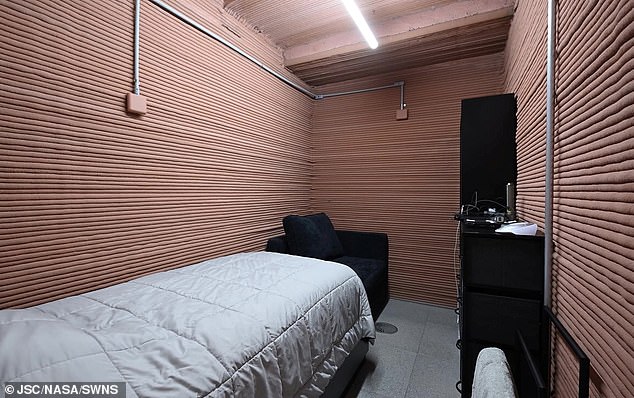If you’ve ever wanted to know what it’s like to live on Mars, NASA may have the perfect opportunity for you.
The space agency is looking for four volunteers for a simulated experiment on Mars, but it’s not for the timid.
Volunteers will be locked up for more than 12 months inside Mars Dune Alpha, a 1,700-square-foot 3D-printed structure at the Johnson Space Center in Houston, Texas.
There, they will conduct simulated spacewalks and provide data on their “physical and behavioral health” as they battle extreme isolation and separation from loved ones.
The futuristic building is intended to replicate the type of structure that humans will eventually build when they finally reach Mars.
For 12 months, volunteers will live inside a building that aims to replicate the type of structure that humans will eventually build on Mars.
The experiment, called Crew Health and Performance Exploration Analog (CHAPEA), will begin next year after a 13-month selection process.
It will be the second load of volunteers for the CHAPEA program, after the first one that began its stay in June 2023.
Each participant is reportedly paid $10 for every waking hour inside the base, which is equivalent to about $60,000.
“The analog mission will be as realistic as possible to Mars, which may include environmental stressors such as resource limitations, isolation, equipment failures, and significant workloads,” NASA states.
“The main crew activities during analog may consist of simulated spacewalks including virtual reality, communications, crop growth, meal preparation and consumption, exercise, hygiene activities, maintenance work, personal time, scientific work and sleep “.
Mars Dune Alpha was built with a proprietary concrete mix called ‘lavacrete’, which is layered to create a ribbed effect on the walls.
Although the inhabitants are isolated and cannot leave except in the case of a medical emergency, the temporary home has basic amenities such as a kitchen and two bathrooms, a shower and toilets, as well as a recreation area, complete with leather sofas and a television . .
However, there are no windows to let in sunlight, so occupants will receive vitamin D supplements.
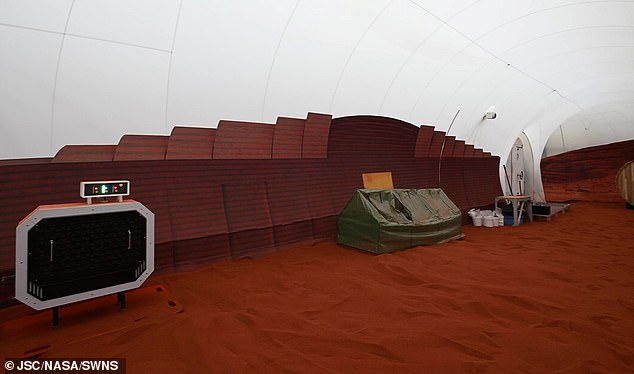
A view of the CHAPEA (Crew Health and Performance Exploration Analog) 3D-printed habitat based at NASA’s Johnson Space Center in Houston, complete with “open-air” Mars sand
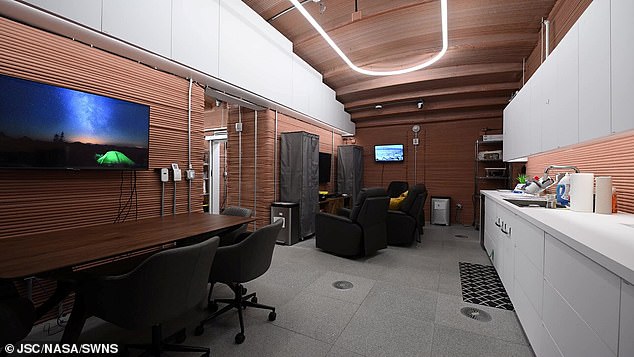
The walls of the Mars habitat have been built with a proprietary concrete mix called ‘lavacrete’. Includes basic amenities such as a kitchen (pictured).
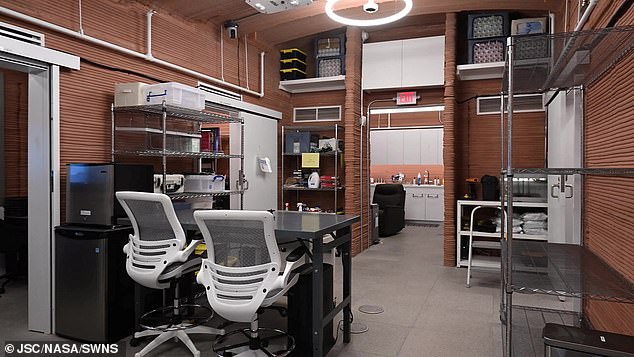
Life on Mars Dune Alpha will resemble the experience expected for those living in a future habitat on the surface of Mars. The 3D printed habitat layout was designed to provide separate areas within the habitat for living and working.
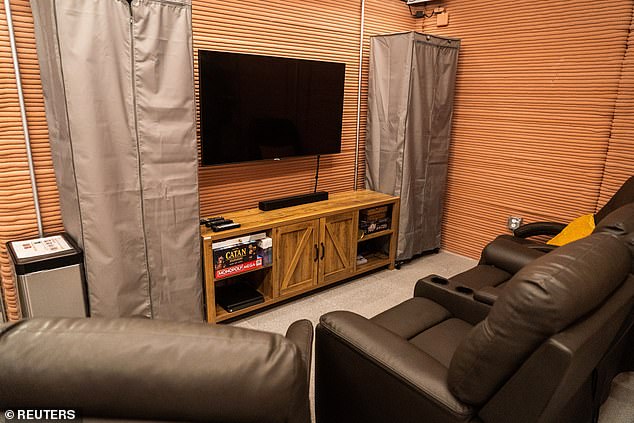
A recreational area is seen inside Mars Dune Alpha, complete with leather sofas and a television.
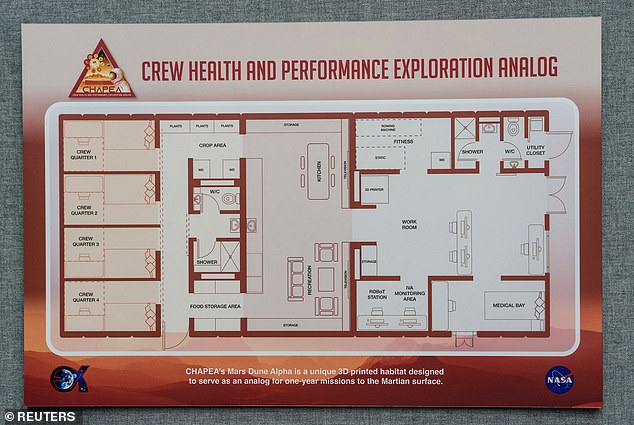
The habitat was created for three planned experiments called Crew Health and Performance Exploration Analog (CHAPEA). The photo shows a floor plan of the facilities.
A diet of packaged provisions is complemented by fresh salads and vegetables grown on “a vertical farm,” in rows stacked vertically.
There is also exercise equipment, including a rowing machine and a treadmill on which volunteers walk suspended from straps to simulate the lower gravity of Mars.
It even has an airlock that leads to an “open-air” reconstruction of the Martian environment with red sand, although it is still located inside the hangar where the facility is located.
There is also various equipment scattered across the sandy ground, including a weather station, a brick-making machine, and a small greenhouse.
NASA experts hope that the CHAPEA program will provide real information about how people will cope on the red planet.
The agency aims to land the first humans on Mars in the 2030s, if companies like Elon Musk’s SpaceX don’t do it first.
NASA principal investigator on the CHAPEA project, Grace Douglas, said this data would allow the agency to better understand the “resource use” of astronauts on Mars.
“We can really start to understand how we support them with what we give them,” he said during a pre-habitat press tour, before the entry of the first cohort.
“That will be really important information to make those critical resource decisions.”
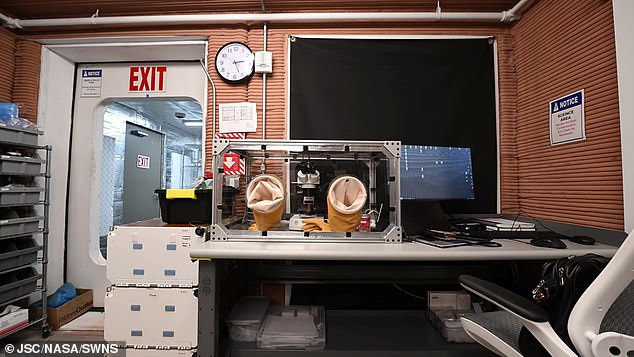
NASA says: “During the mission, the crew will conduct simulated spacewalks and provide data on a variety of factors, which may include physical and behavioral health and performance.”
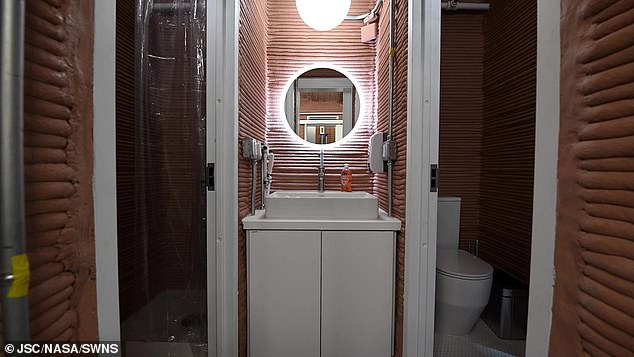
The temporary housing has basic amenities such as a kitchen and two bathrooms, a shower and toilets, as well as a recreational area.
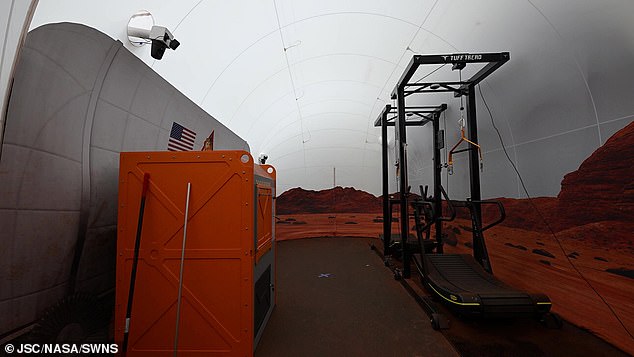
In the photo, a treadmill on which volunteers walk suspended from straps to simulate the lower gravity of Mars.
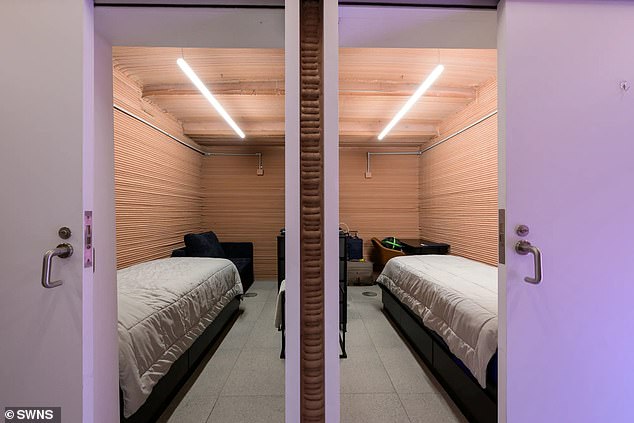
Risk of cabin fever? In the futuristic Mars base there are four bedrooms, one for each inhabitant
Although you do not have to be an astronaut to apply, NASA’s selection criteria are strict.
Applicants must be US citizens or permanent residents between the ages of 30 and 55.
They must also have at least two years of related professional experience in a STEM (science, technology, engineering and mathematics) field or at least 1,000 pilot-in-command hours in a jet aircraft.
They must also pass a physical evaluation and undergo medical evaluations and psychological tests, be vaccinated against Covid, have no criminal record and much more.
NASA adds: ‘Candidates will not be selected if they have food allergies, food avoidances or gastrointestinal disorders, as they cannot adapt to a long duration mission.
The applications are open now and are taking until April 2, with an expected start date of spring of next year.

